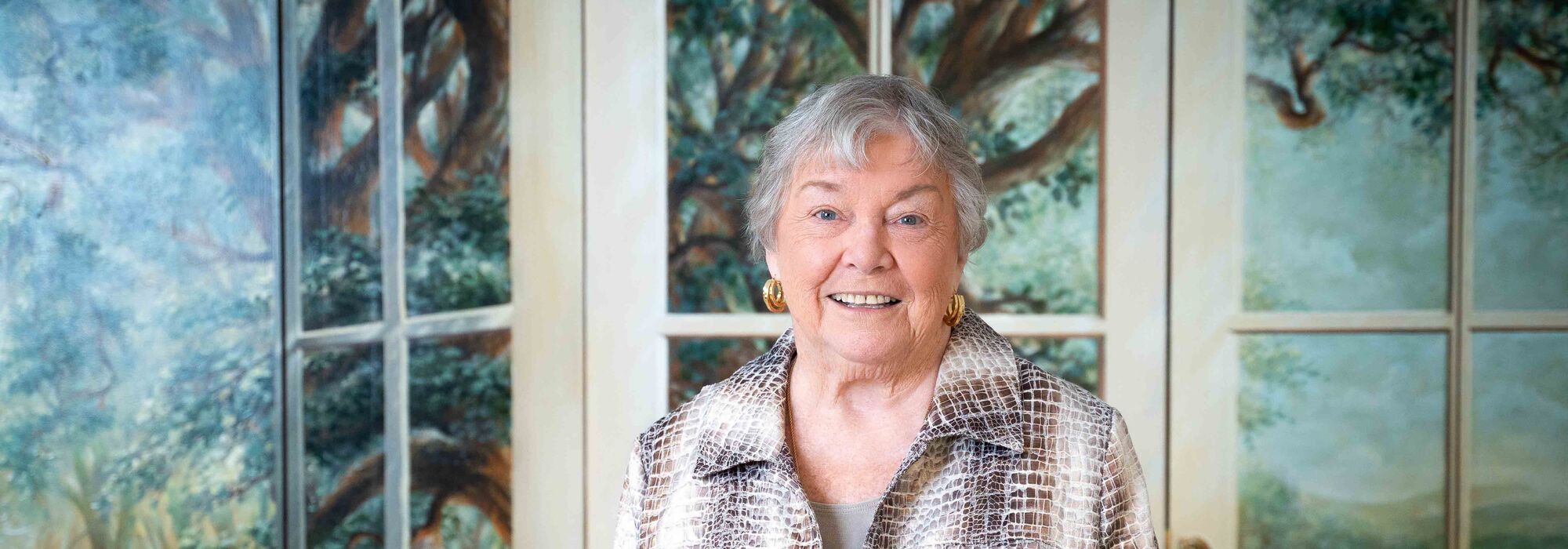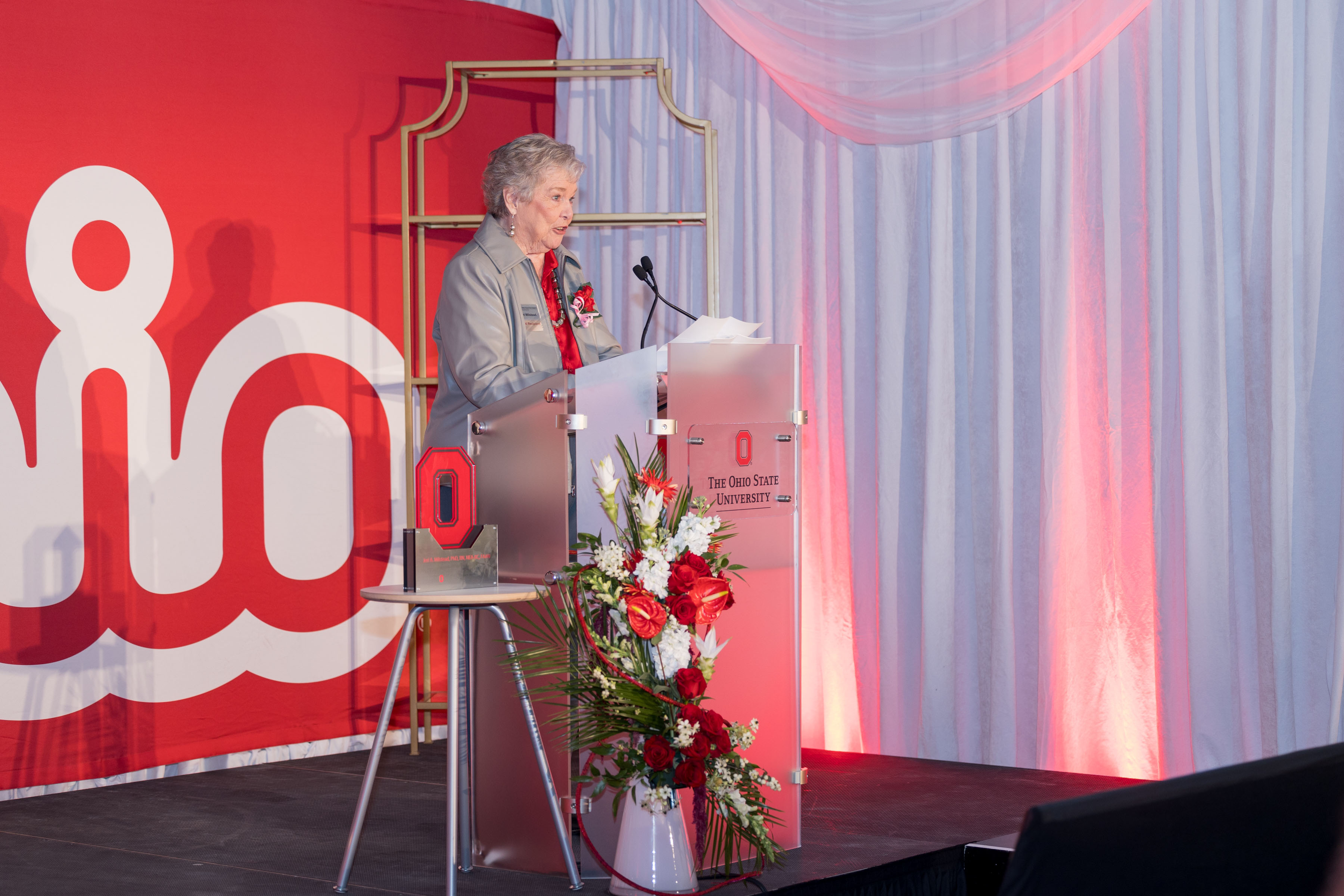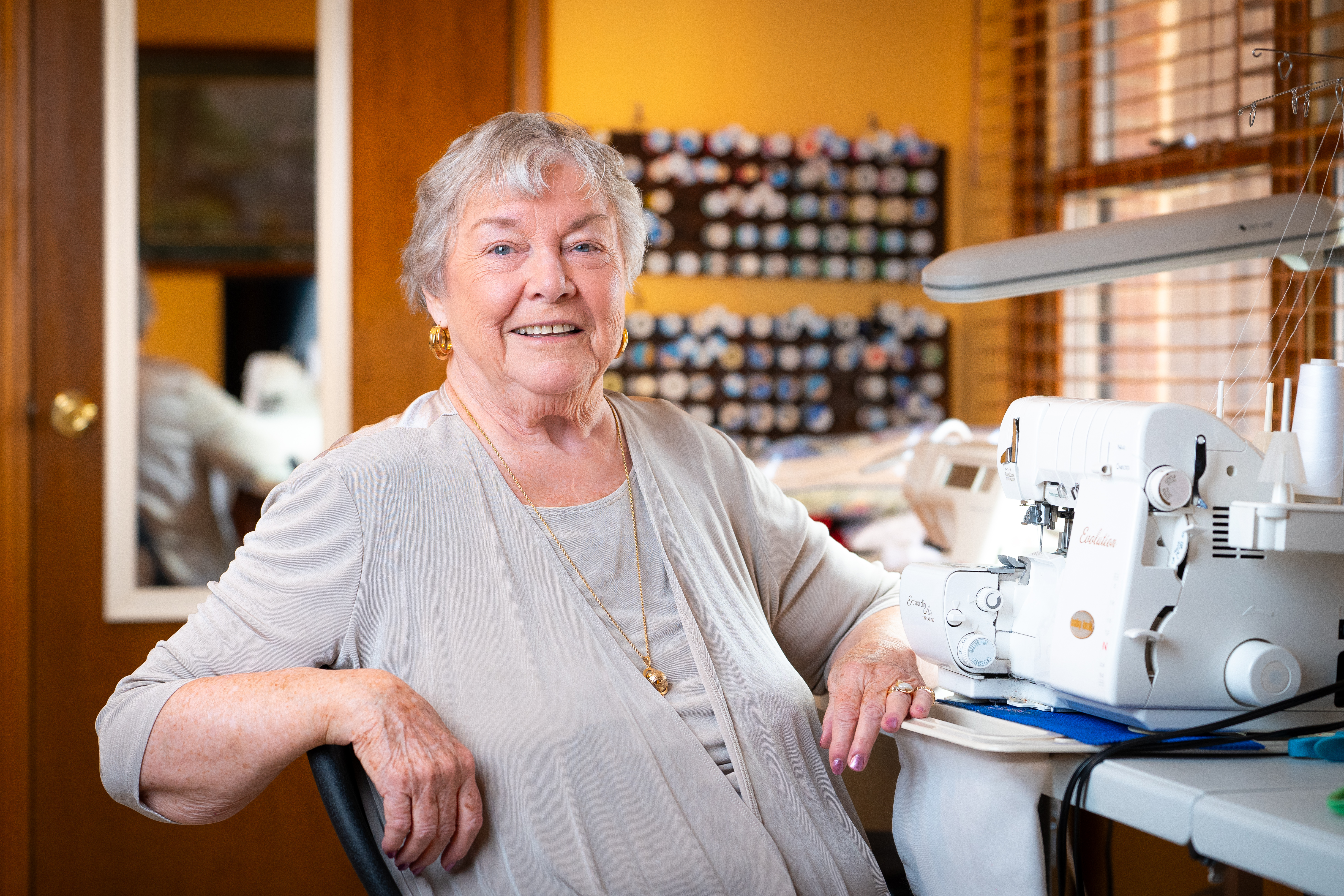
Alumni in Action: Jeri Milstead
by Victoria Ellwood
When Jeri Milstead, PhD, RN, NEA-BC, FAAN (’75, ’76), found out she would receive the 2024 Archie Griffin Professional Achievement Award from The Ohio State University Alumni Association, she says, “I got tears in my eyes. It was a lovely surprise, and I’m very humbled.”
Of all her awards and accolades (and there are many), she says this honor – presented at a ceremony on campus Sept. 20 – is one that really impressed her kids.
“They were blown away! I tell my kids that I mind my own business. I don’t get in anybody’s face, and things just come along,” she says. “And this came along.”

Frankly, that’s a bit of an understatement of her extraordinary accomplishments over a storied, 67-year nursing career. Milstead was nominated by Dean Karen Rose for the award for her leadership in healthcare policy and for influencing generations of nurses. Among her groundbreaking accomplishments, Milstead has been a powerful advocate of nurses’ role in healthcare policymaking; she authored the quintessential textbook on health policy for nurses; worked with U.S. and state senators and representatives; has served on the nursing faculty at Ohio State, Clemson University and Duquesne University; and retired in 2008 as dean and professor at the University of Toledo College of Nursing.

But lest it appear that she had clearly mapped out her exemplary career with focus and intention from the outset ... that’s not quite how things actually unfolded.
“Mine was a zigzag course, as most of our lives are,” Milstead says. Despite facing some curveballs and challenges, Milstead says she was always open to opportunities. “Sometimes you just have to say, what the heck, let’s give it a shot.”
Milstead grew up in Washington Court House and got a nursing diploma in 1957. After her husband graduated from college and with “a couple of kids in tow,” the family moved to Newark, where she got her first teaching job in an LPN program in nearby Zanesville.
Several years later, when the couple had four children, they decided she needed a college degree to assure the opportunity for their children to attend college when they grew up. “It was my turn to go back to college,” she says of enrolling in Ohio State’s bachelor of nursing program. “It was the early 1970s and I was 35 years old. It was a crazy time to be back in school. It was the women’s lib movement, Vietnam protests, coming out of the closet, civil rights. All those things were happening and nursing theory and research were brand new. For a learner, it was a remarkable time.”
She had finished two nursing degrees at Ohio State when things took an unexpected turn. “My husband dropped dead of a heart attack at 42. He was out playing softball. He was a jock. He was in perfect health. We had three teenagers, a 10-year old and a brand-new mortgage.”
She remembers, “At the time, I called myself a refrigerator nurse. I worked to pay off the refrigerator, then I worked to pay off the car. I didn’t really have a ‘career,’ but fortunately I had Ohio State’s bachelor’s and master’s degrees behind me. That made all the difference in the world, but I had to kick it into gear and find a 12-month position to keep us together.” She landed at the Ohio Nurses Association, a position that gave her “a global perspective of nursing that I had never been exposed to.”
Sometimes you just have to say, ‘What the heck, let’s give it a shot.’”
– Jeri Milstead
From there, she joined the faculty at Clemson University in South Carolina. “I never ever thought about leaving central Ohio. But I decided I had to do it. I knew I’d have to start a PhD program and assumed I could get a PhD in nursing.” It was 1985 though, and there were only four PhDs in nursing in the entire South, so she opted to work on a PhD in political science instead. “It took seven years. I never had any political science classes, but I thought, ‘Why not? Let’s start at the top.’ ” During those years, she also wrangled her way into working in the office of a U.S. Senator for three months in Washington DC.
“By the time I finished, my focus was on public policy and comparative politics. Clinton was president, and it was a time when policy was starting to become very important,” she says. “It was exciting because I was treading new ground.”
Milstead serendipitously met a handful of other nurses working on PhDs in political science, too. “As it turns out, we all happened to write our dissertation research on different aspects of the policy process. When I realized that, I thought, ‘There is a book here.’ ’’
The group coauthored the book Health Policy and Politics; A Nurse’s Guide, with Milstead as editor and senior author. “The eighth edition is coming out next year, and I’m still actively involved,” she says of the book that remains the only research-based, theory-based policy textbook for nurses, and is sold in 22 countries. “When it came out in 1999, no one had ever heard of such a thing, and it’s become the standard.
“The book was the gateway for helping nurses figure out what policy is, how it could affect them, and how they could affect it. It got nurses to the table. It gave us a voice.”
What’s Milstead most proud of? “Oh gosh, I think just taking on opportunities,” she reflects. “I don’t consider myself a big risk taker but I’ve taken a few giant risks. When I left Ohio to go to Clemson. When I went into political science. When I took grad students to Holland to study that country’s healthcare system for a month – when I’d only been to Europe once as a tourist.
“As I look back, these things were risks but I didn’t see them that way. I saw them as opportunities.”
Today, at 88, Milstead is still involved with the upcoming edition of the healthcare policy book. She and a group of Ohio nurses recently joined forces to establish the American Nurses Association-Ohio, which has garnered more than 2,000 members in less than a year. And she stays closely involved in the American Academy of Nursing.

Milstead prioritizes time with family and friends. Now living in Dublin, Ohio, she is not far from her four children, three adult grandchildren and the “three little squirrels – the great-grandchildren.” She enjoys traveling – the family took a fabulous trip to Bora Bora not long ago, on an Ohio State alumni excursion. She writes and loves to sew, calling creative work at her sewing machine her “happy place.”
She’s also fighting a personal battle. Diagnosed two years ago with stage-four breast cancer, she says, “It was past chemo, past radiation, past surgery. About the only thing they could do is give me medication to slow it down.
“They gave me a year without treatment almost two years ago ... and I’m still here! So, it’s working,” she adds, crediting the oncology team at Ohio State and the Stefanie Spielman Center.
“Everything I’ve done has been a team effort,” she says. “The group that wrote the book. My family when we were at our most dire time after my husband died. My network of nurse colleagues (we call ourselves the Tribal Elders). It’s never been just about me. It’s always about us. How we make it happen. I’m very lucky.
“I’m eternally grateful to Ohio State for all they have given me and all they prepared me for – prepared me for leadership, prepared me for entry into policy that no one else was doing. And now they are keeping me alive. What more could I ask?”
In this Issue
- DNE: The Change Agents
- Clinician Well-Being Summit
- From Lab to Life
- Expanding Community Care
- Reaching out to Taiwan
- Buckeye Inspiration: David Hiatt
- Brain Health Fair
- Grants Roundup
- Student Life: Isabelle Meehan
- Connecting Young People in Crisis to Health and Hope
- Alumni in Action: Jeri Milstead
- Putting Our Heads Together for Brain Health
